Last updated on December 28, 2023
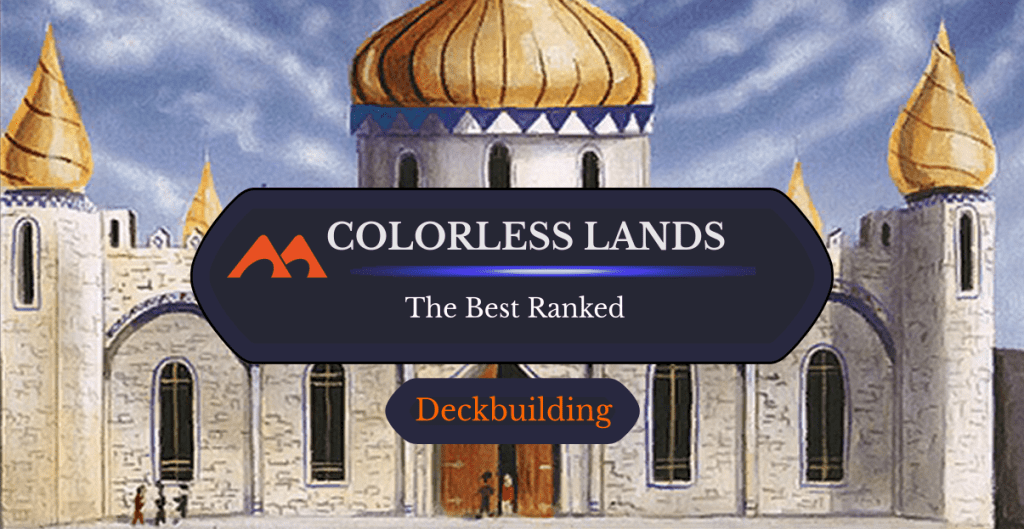
Library of Alexandria | Illustration by Mark Poole
Lands are a crucial part of the game, and every deck has to have them. Well, 99.9% of them do, for all you nitpickers. The main function of those lands is to generate mana to cast spells, which is one of the first things you learn when picking up the game.
But there are some lands that are included not only for their mana function, but also for their abilities. These are called “utility lands,” and every Constructed format has its staples. They usually tap for colorless mana, and today we’re focusing on that as I rank the best colorless lands in MTG.d
Ready? Let's get started!
What Is a Colorless Land?
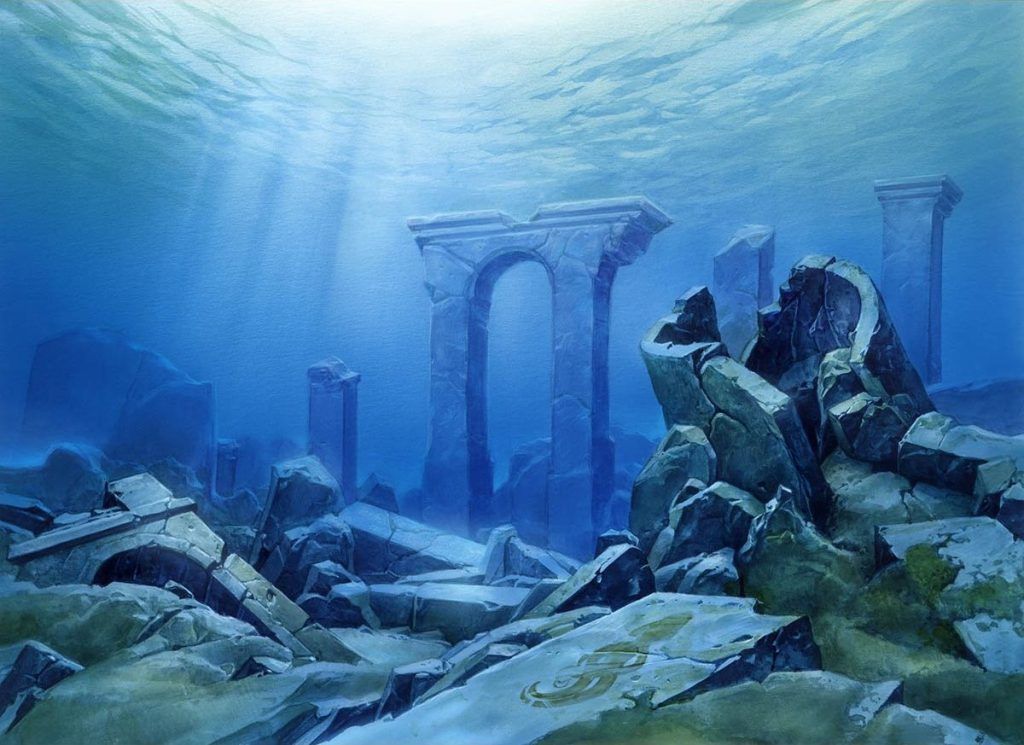
Academy Ruins | Illustration by Zoltan Boros & Gabor Szikszai
Pretty much all lands in the game are colorless, so I'm sticking to the exact definition of a colorless land. Lands that generate mana of any color, like Command Tower or Glimmervoid, count as colorless, but cards that generate white mana like Karakas or affect card types like Urborg, Tomb of Yawgmoth don't.
And if your commander is colorless like Ulamog, the Ceaseless Hunger or Kozilek, Butcher of Truth, then most of these lands will be playable in the 99 alongside basic Wastes. There aren’t many other options available anyway.
#60. Animal Sanctuary
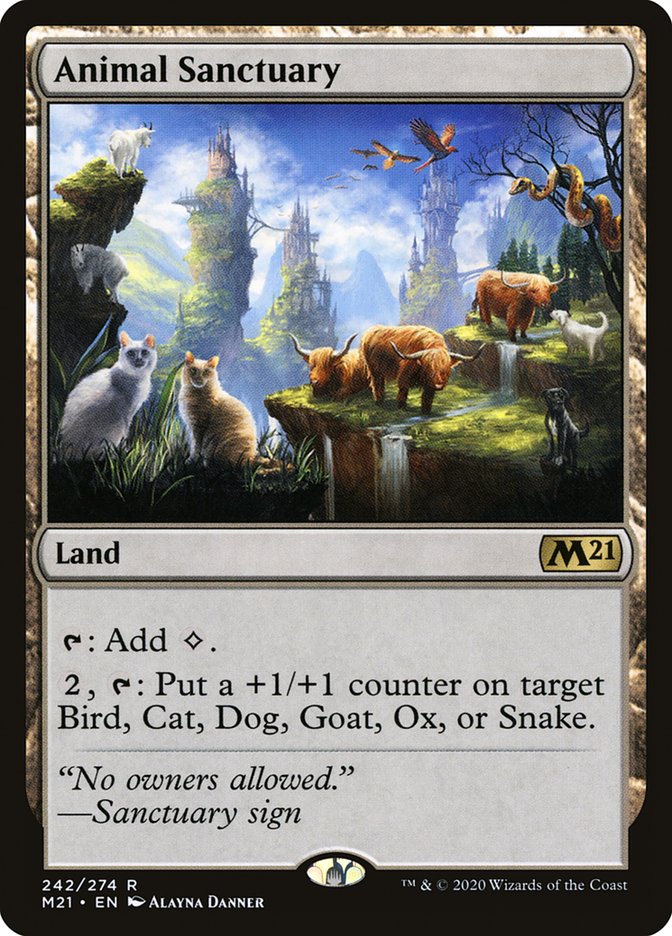
There are some tribal EDH decks that like Animal Sanctuary, especially cat– and snake-themed ones. It also works with changelings.
#59. Crystal Grotto
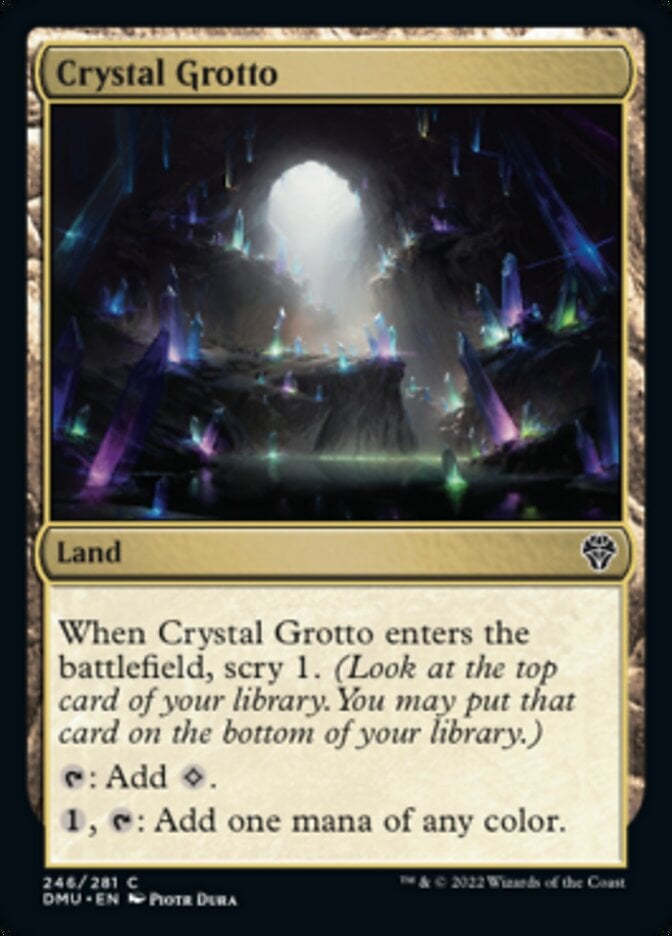
Crystal Grotto is a bit underrated, or at least it was at the beginning of W9lds of Eldraine draft. It lets you peak at the top while still being able to cast a colored 2-drop, which is pretty alright. It also can filter mana, which isn't a completely usefuless upside.
#58. Cathedral of War
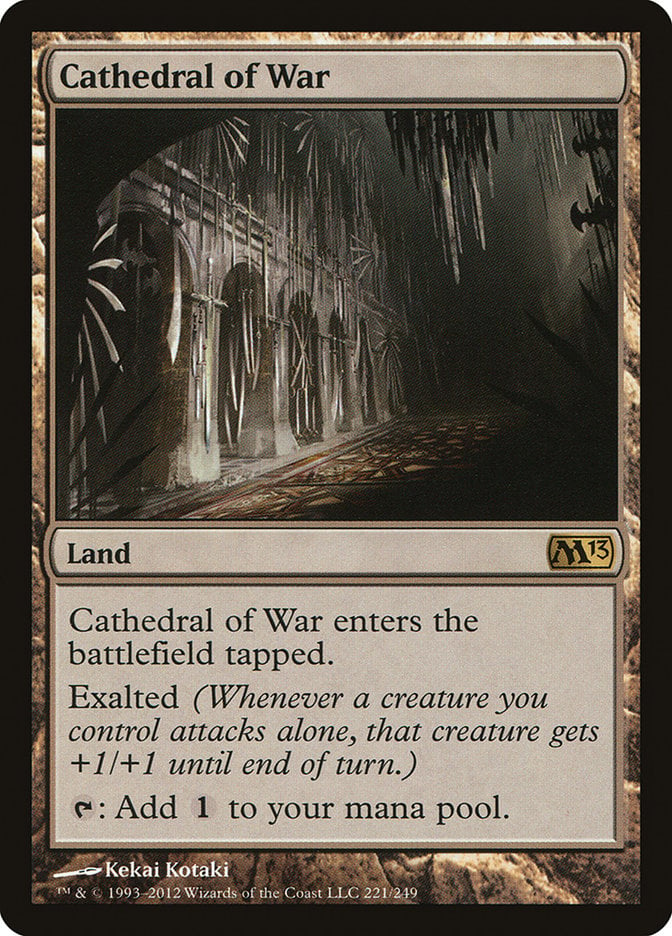
Cathedral of War is the only land in the game to feature the exalted mechanic. Dedicated exalted decks can play up to four copies, and it’s okay to play one in EDH depending on your deck.
#57. Gemstone Mine
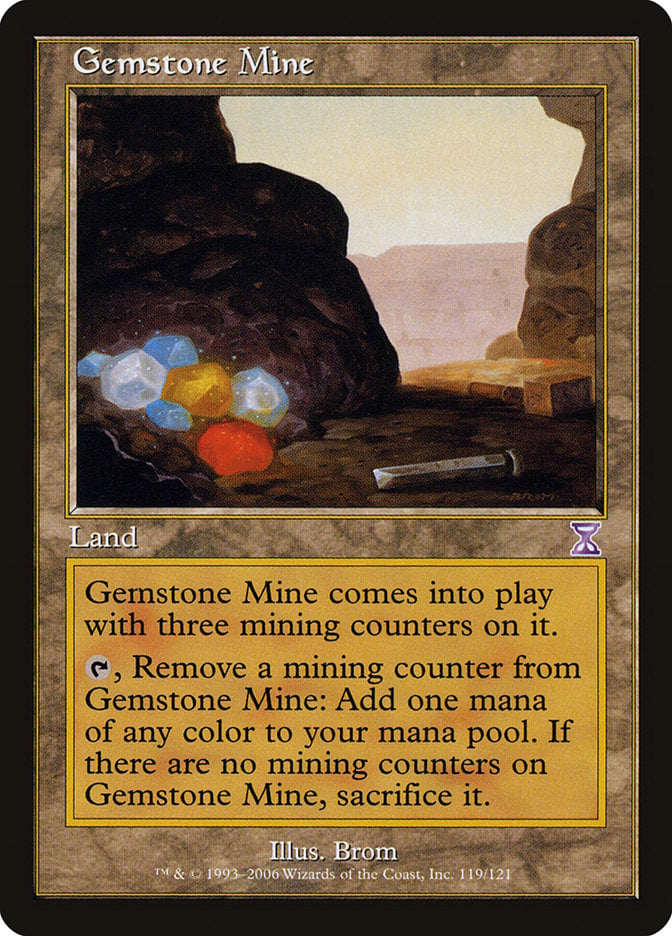
The boomers will remember that Gemstone Mine was a card played in Modern some 10 years ago in certain combo decks (feel old yet?). That’s it, a 3-use 5-color land that gets better if you proliferate or recur lands.
#56. Desolate Lighthouse
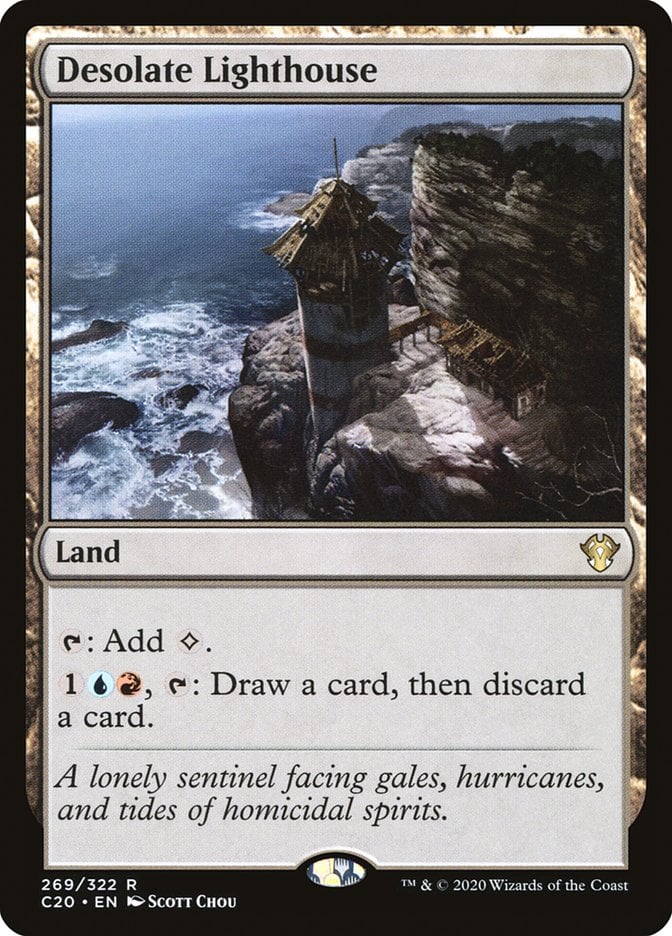
I remember Desolate Lighthouse played as a one-of in Izzet () Splinter Twin decks in Modern and Standard. Having the loot effect on a land is very interesting since the cost of including this in your deck is marginal.
#55. Hall of Heliod’s Generosity
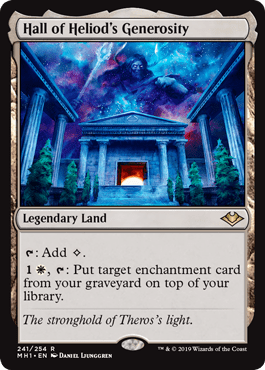
Hall of Heliod's Generosity can be a cheap and steady form of recursion in a deck full of enchantments, just like Academy Ruins works for artifacts.
#54. City of Brass
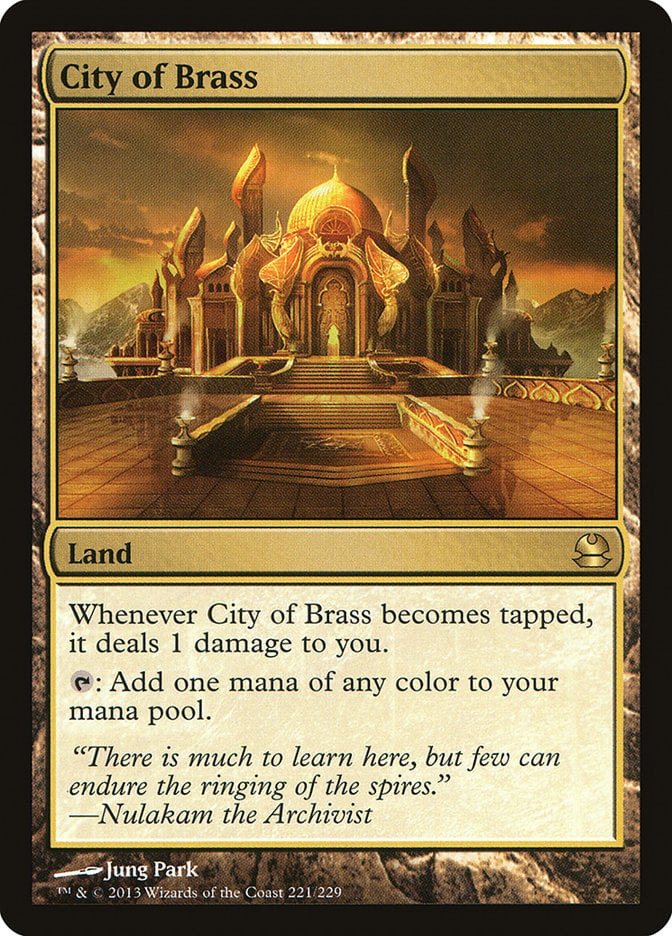
The original pain land, City of Brass was heavily played in MTG’s early years. It made it easier to play more than three colors in a time before fetch lands.
#53. Arch of Orazca
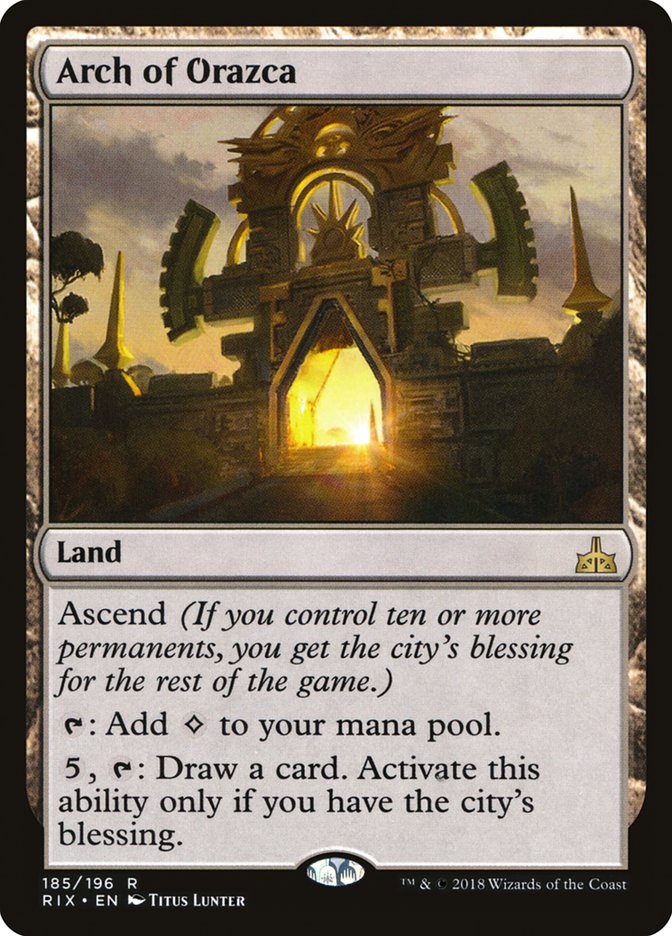
Another heavily played land when it was in Standard, it’s easy to get the city’s blessing in long games and squeeze out card draw from a colorless source with Arch of Orazca.
#52. Blinkmoth Nexus

Lands that turn into creatures are interesting, and Blinkmoth Nexus is even an artifact creature to boot for decks that care about that. But there’s an almost strictly better version in Inkmoth Nexus.
#51. Forbidden Orchard

Creating a 1/1 creature for your opponent every time you tap a land for mana is horrible, but you get a mana from any color, so there’s that. The thing that makes Orchard so good is that there are certain decks that want your opponents to have creatures, like Oath of Druids combo, so the downside is actually an upside.
#50. Ghost Quarter
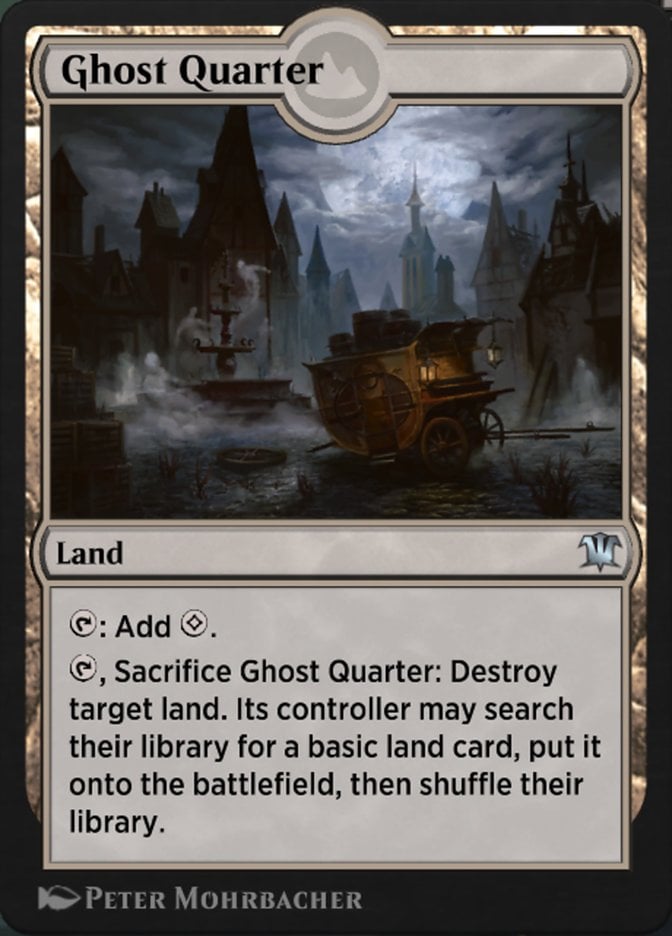
Ghost Quarter was once the premium way to get rid of problematic lands like the Urza Tron lands in Modern and Standard. But Field of Ruin is probably the better card.
#49. Crawling Barrens

Crawling Barrens is a manland that’s currently legal in Standard. You can just wait turn after turn and grow the barrens to have a good attack and win.
But there’s a lot of competition since the manlands from Forgotten Realms are quicker, and hate in the form of removal and Field of Ruin easily takes care of this.
#48. Haven of the Spirit Dragon
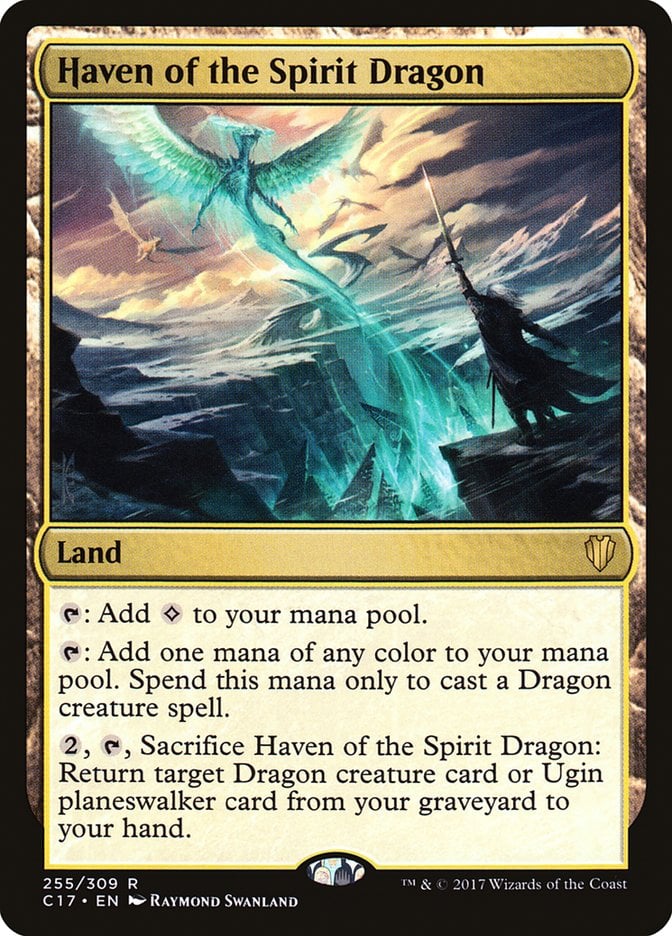
Decks with lots of dragons have Haven of the Spirit Dragon as their color fixer, and the ability to get a card from your graveyard is also very relevant. A very dominant card in its Standard era.
#47. Inventors’ Fair
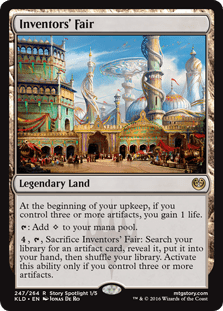
Inventors' Fair is a tutor for artifacts that gains some life in a dedicated artifact deck. Yeah, it’s as good as it sounds.
#46. Boseiju, Who Shelters All
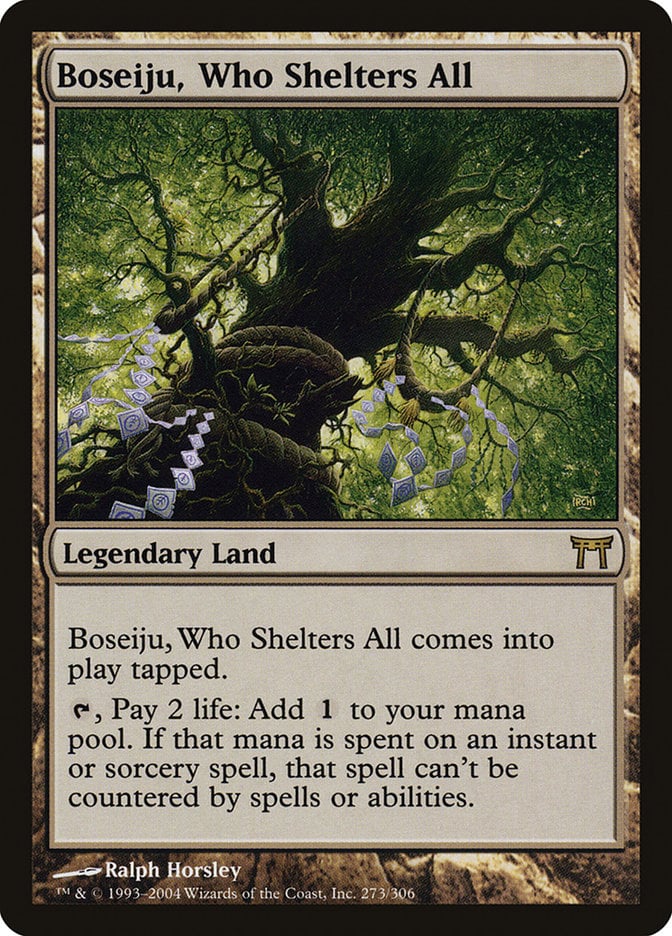
A hate card against counterspell decks, Boseiju, Who Shelters All makes it so that your instants and sorceries can’t be countered, which is key in resolving a combo spell or winning a counter war. Kids nowadays have their Teferi, Time Raveler and Dovin's Veto, but it wasn’t always this way.
#45. Exotic Orchard
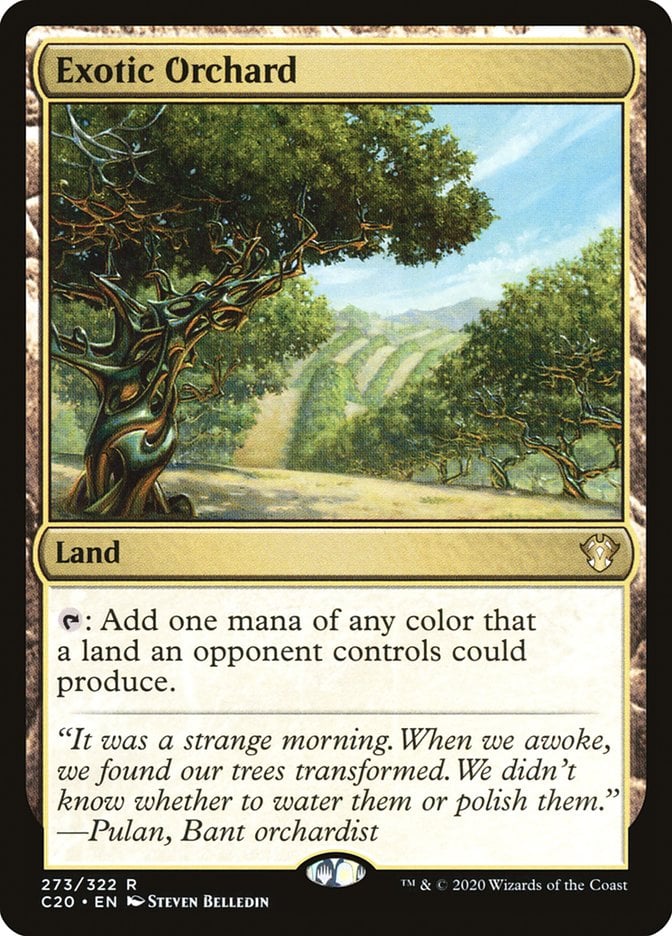
A land that’s nice in EDH since your opponents play at least three colors combined. The problem is that Exotic Orchard probably won’t exactly fit your Commander’s color identity, but it’s nice to play in 4- or 5-color decks.
#44. Karn’s Bastion
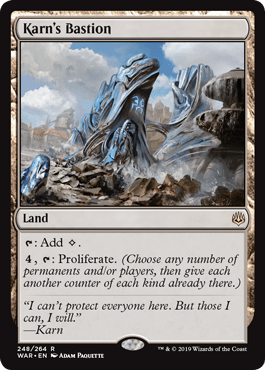
Karn's Bastion is a way to proliferate repeatedly for cheap. It's very good in decks with +1/+1 counters and planeswalkers.
#43. Maze of Ith

Untapping a creature and taking it out of combat is good, but unfortunately Maze of Ith doesn’t have a mana ability so having it in play just for the ability is kind of a liability. And it’s not that good against something like hexproof creatures.
#42. Aether Hub
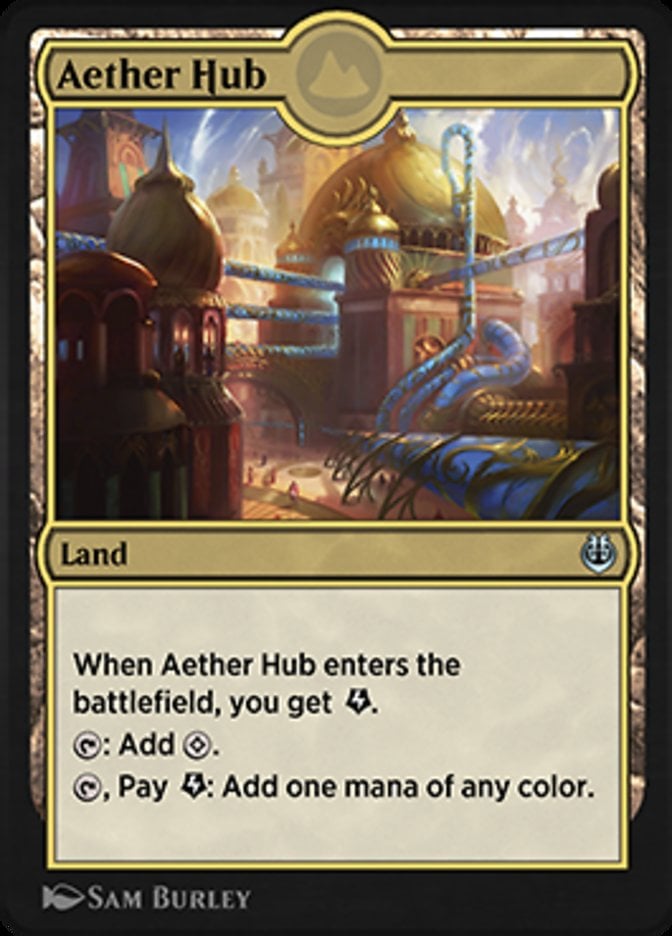
Aether Hub was a very strong land in the energy-filled Standard of Kaladesh. Getting an energy and color fixing on the same land is huge, and you should play it in any energy-themed deck.
#41. Vault of the Archangel
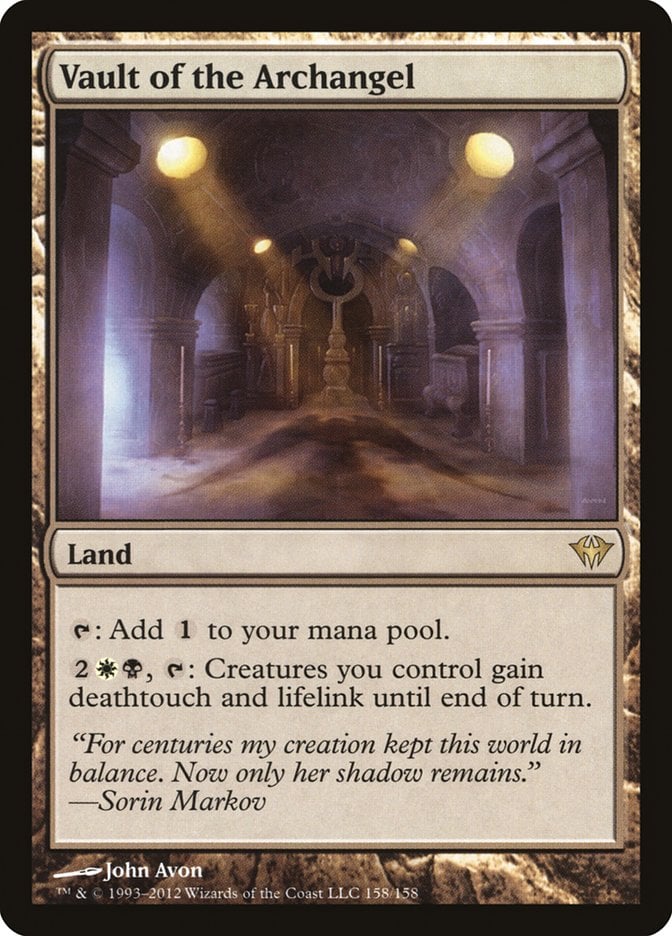
Giving deathtouch and lifelink to your creatures is powerful, because you either get life or kill the opposing creatures, or both. Vault of the Archangel can be game ending in conjunction with Walking Ballista.
#40. Spire of Industry
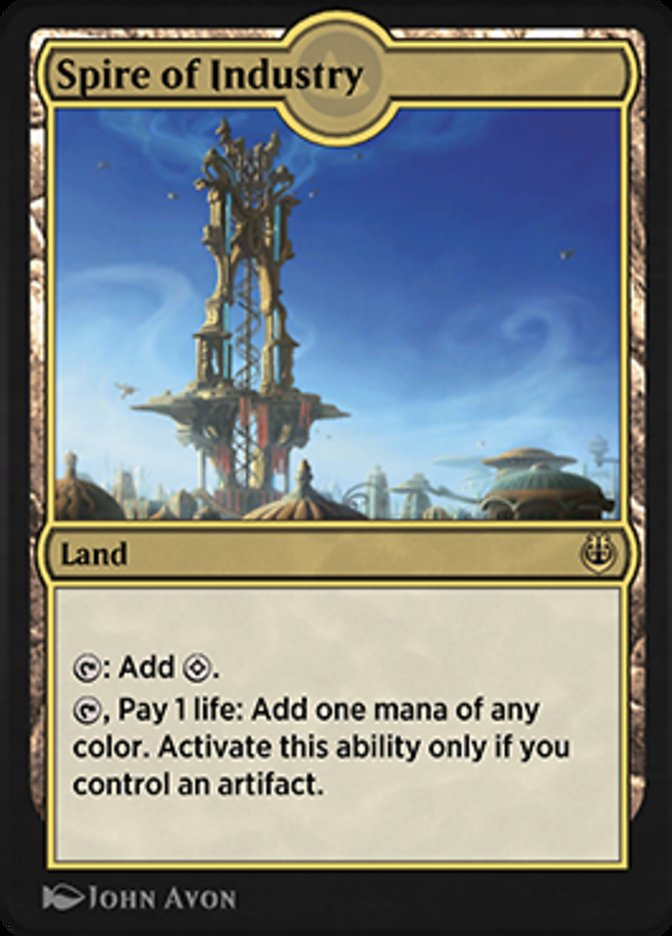
Spire of Industry is mana fixing for artifact decks. It's also playable in lots of decks, like Modern affinity and EDH artifact builds.
#39. Glimmervoid
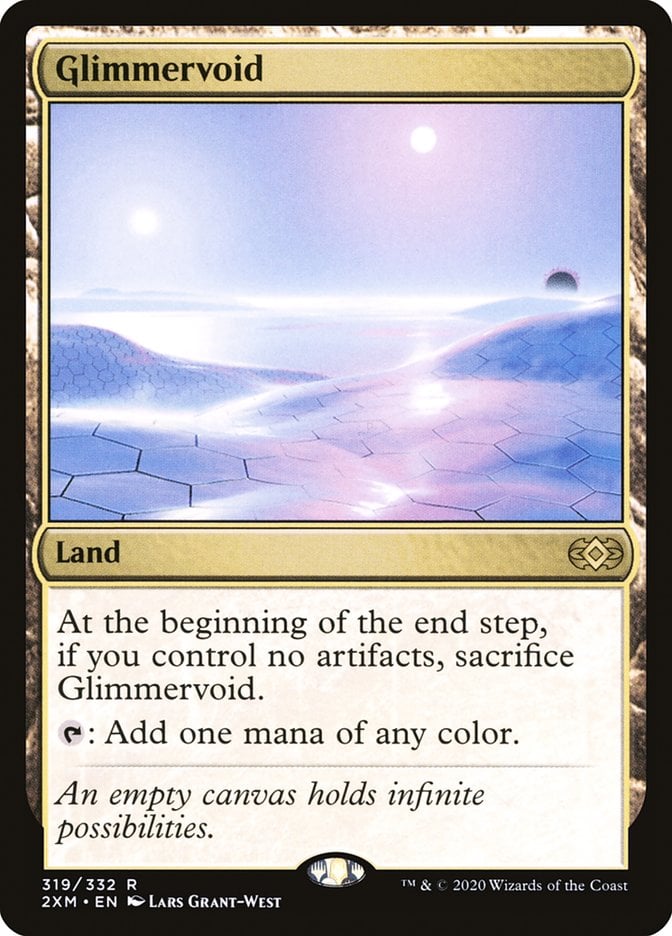
Similar to Spire of Industry, Glimmervoid represents more opportunities for mana fixing in artifact decks, but you won’t take damage. You may need to sacrifice it, but it’s a lot harder to get rid of all your artifacts, especially the indestructible lands.
Glimmervoid decks won’t like the existence of cards like Farewell, though.
#38. Rogue’s Passage + Access Tunnel
I’m ranking Rogue's Passage and Access Tunnel together because they serve a similar purpose, particularly in Commander where you want to win via commander damage or draw a card from Daring Saboteur ability. But the Passage is much better because there’s no restriction of power.
#37. Bonders’ Enclave
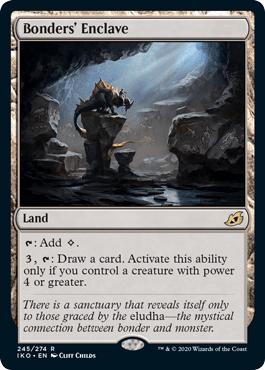
Paying three mana to draw a card isn’t the worst, except you have to have big creatures in play. Expect to see Bonders' Enclave played in decks aiming for aggression and big creatures.
#36. Academy Ruins
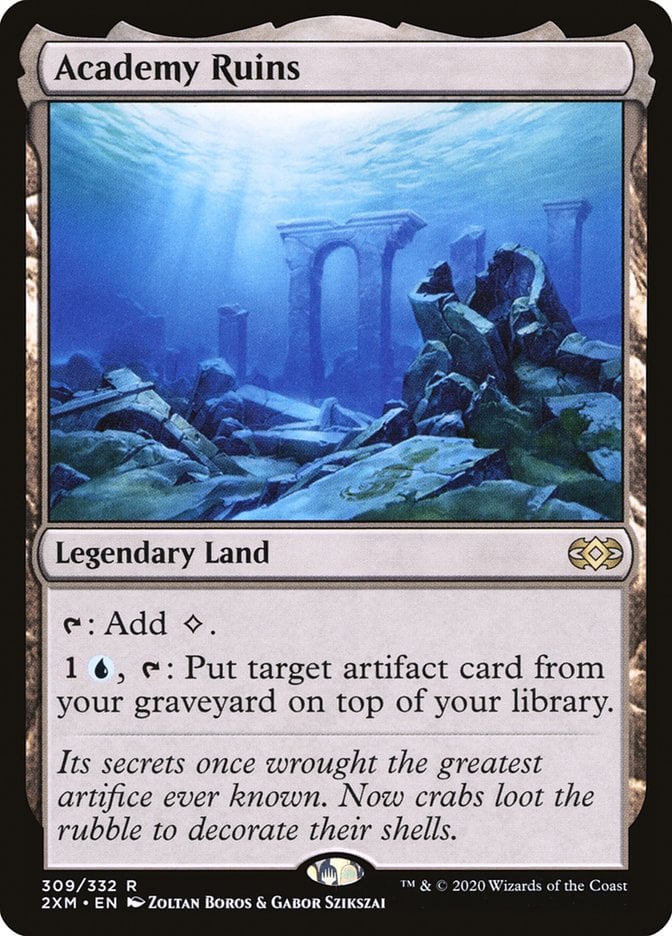
Academy Ruins can be a cheap and steady form of recursion in a deck full of artifacts. It's much higher on the list because it serves as a soft lock with cards like Mindslaver.
#35. Reflecting Pool
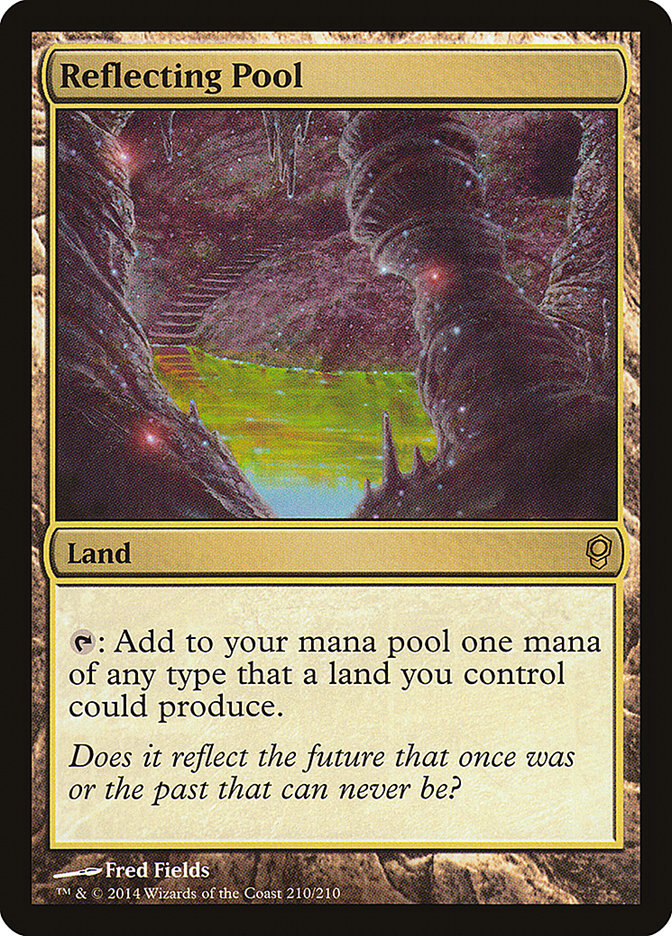
A land that generates mana from all colors you can produce is a very good combo with lands like Vivid Creek. Reflecting Pool was heavily played in its Standard format and is also a staple of EDH and 5-color decks.
#34. Mana Confluence
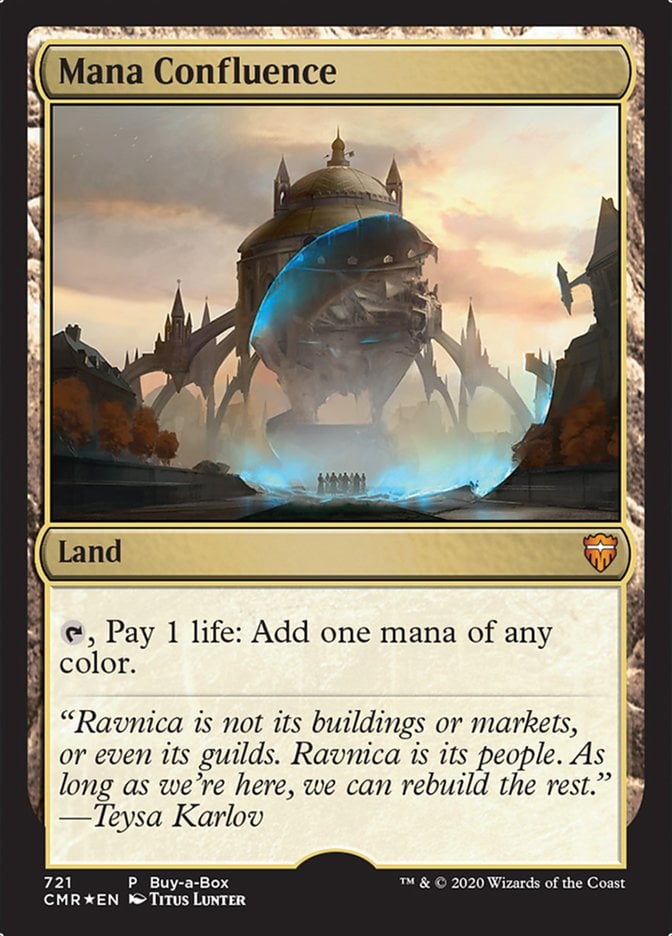
Mana Confluence is a strictly better City of Brass for a couple reasons. It’s legal in more formats and it hurts the user only while tapped for mana, while it can be tapped by your opponent with Fire // Ice or something similar and hurt you in the process. Either way it’s a somewhat painful way to generate mana of all colors, which is good in 4- and 5-color decks.
#33. Sliver Hive
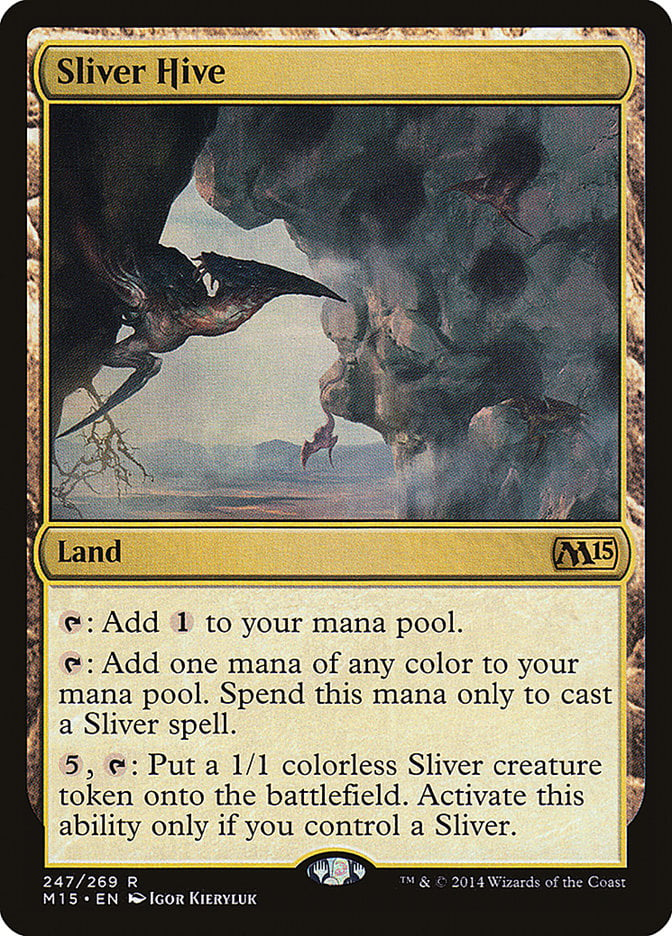
5-color fixing for slivers is very good, and there’s always a sliver tribal or EDH sliver deck lurking around. Sliver Hive‘s ability to make a 1/1 for five mana is good, and it’s even better because it’s a sliver for tribal purposes.
#32. Blast Zone
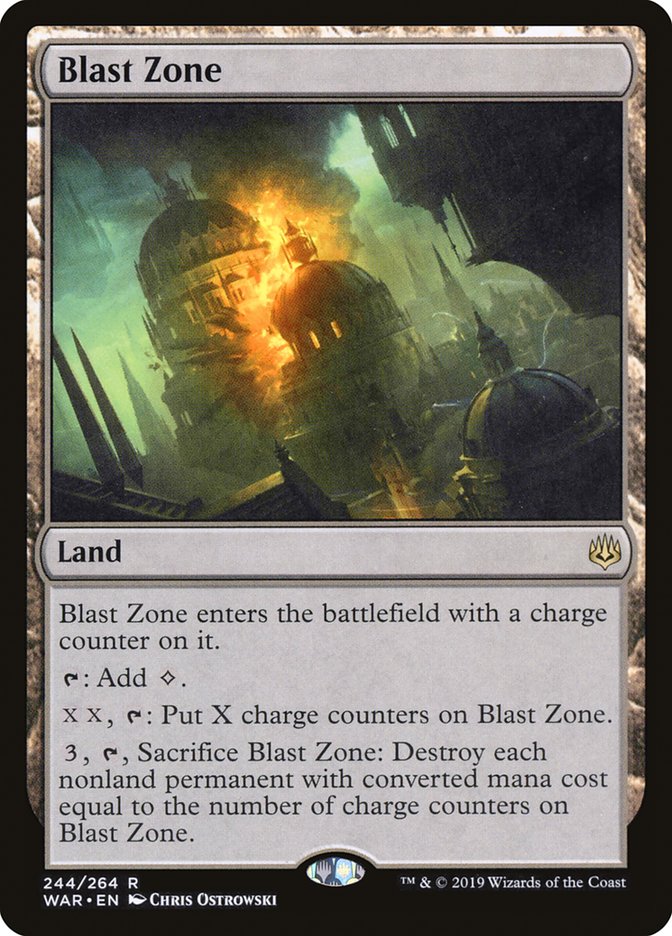
Blast Zone is an interesting way to convert a land into a sweeper. It can’t be sacrificed to wipe out tokens in the same way that cards like Ratchet Bomb can since it already comes with a counter. This works wonders with proliferate and counter manipulation.
#31. Eye of Ugin

Eye of Ugin was responsible for a surge of power in Eldrazi decks. The card needed to be banned in Modern because of its explosive potential with Eldrazi Mimic, Matter Reshaper, and Thought-Knot Seer.
#30. Eldrazi Temple
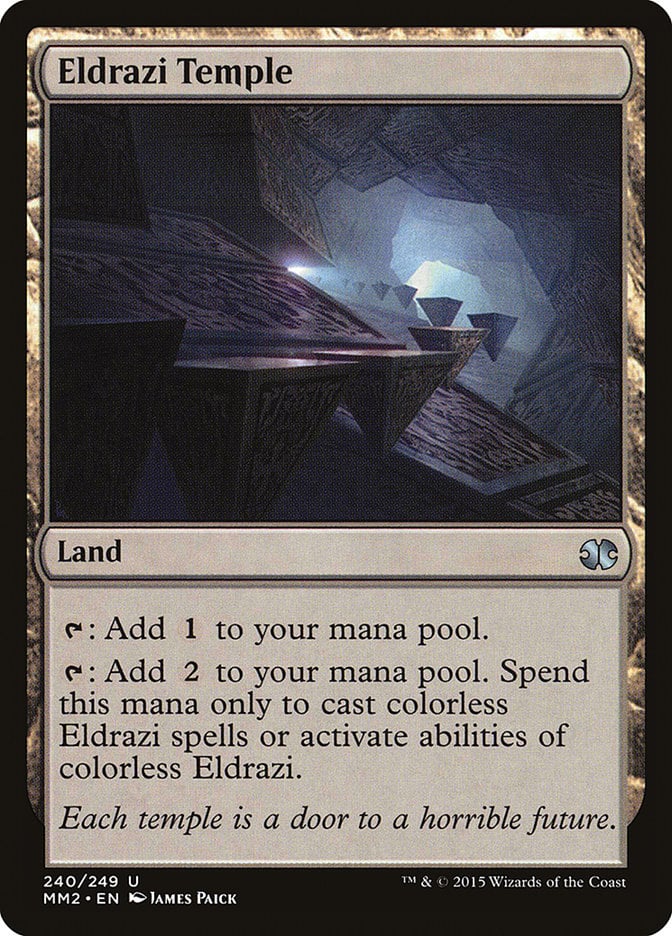
The “not banned” engine for Eldrazi decks, Eldrazi Temple generates two mana to cast Eldrazi. This usually means cheaper Thought-Knot Seer or Reality Smasher, and it isn’t legendary so you can have multiple Temples in play at the same time.
But there’s no real reason to play it outside of Eldrazi decks.
#29. Temple of the False God

Temple of the False God makes the list because it’s strong in EDH, a format where it's easy to have lots of lands in play. I'd avoid it in 60-card Constructed formats.
#28. Gavony Township
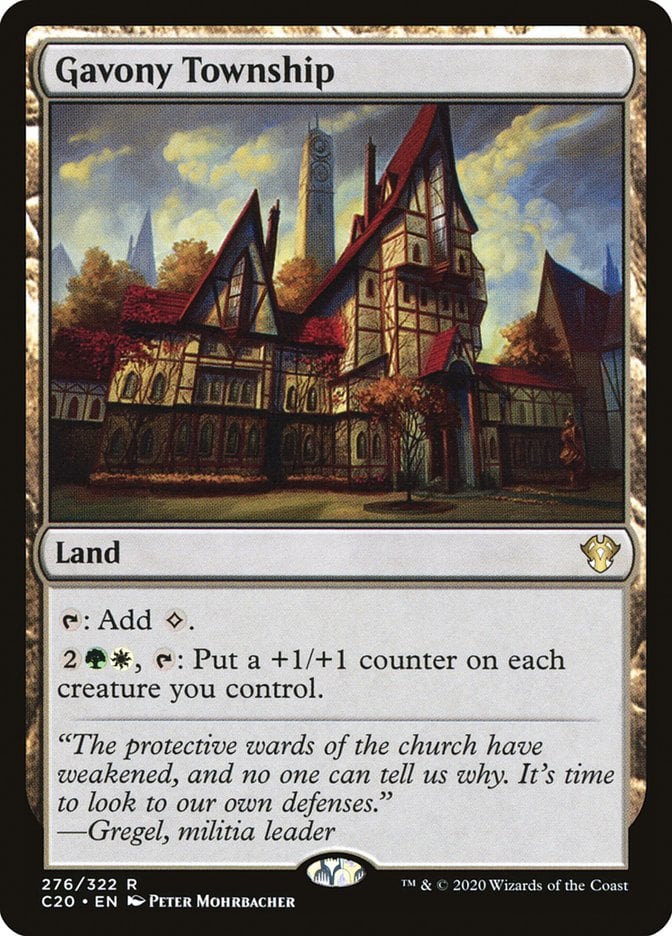
What do almost all Selesnya () decks have in common? Creatures tokens and +1/+1 counters, of course!
Gavony Township fits these decks and pumps them like a boss. A card you’ll most certainly play in Selesnya when creatures matter.
#27. Kessig Wolf Run

What does a Gruul () deck want more than to give +X/+0 and trample to a big creature? This land is good because the effect can be used every turn, and it’s even a mana sink effect. A good way to win games via commander damage.
#26. Slayers’ Stronghold

Slayers' Stronghold gets the nod because it’s usually an important part of Amulet of Vigor and Primeval Titan decks since the Titan can fetch it, get haste, attack, and keep the ball rolling. +2/+0, vigilance, and haste is a good buff to have on a land otherwise, and one that Boros () decks are certainly interested in playing.
#25. Fabled Passage

Although it only fetches basics with downside, fetch lands are very good in the formats where they’re legal. Fabled Passage is good because it’s the only one available in formats like Pioneer and Explorer, on top of being a cheaper fetch if you want to play it in EDH.
#24. Reliquary Tower
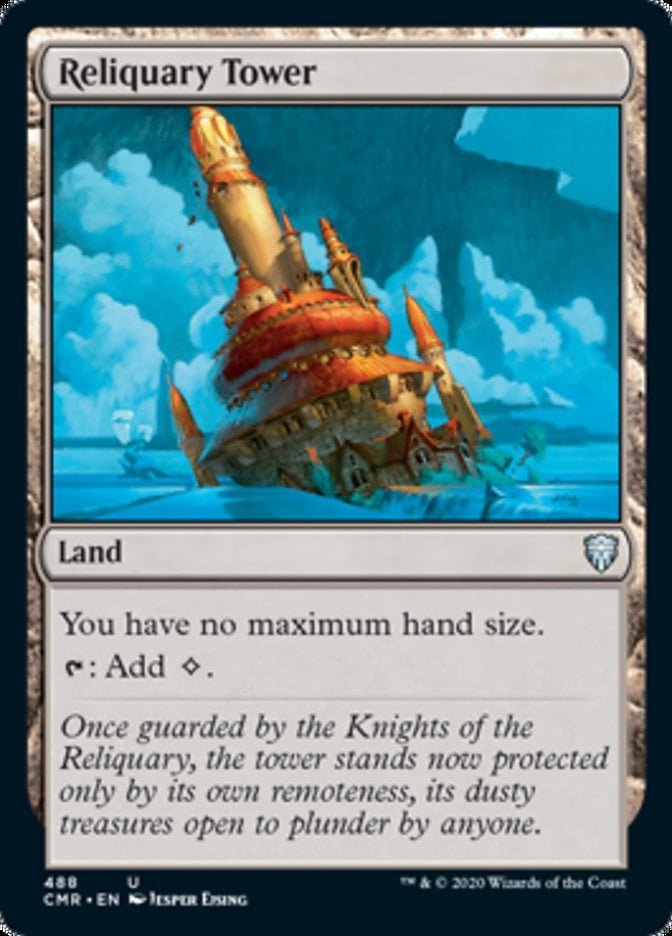
Drawing lots of cards is very meaningful to EDH players, and a land that says “you have no maximum hand size” has to be good, right?
#23. Thespians’ Stage

Like Vesuva, Thespians' Stage sees play in decks like Dark Depths because you can copy the land without the counters, allowing you to have a 20/20 Marit Lage faster than normal. Otherwise, you can copy an ability land you like, or even a 5-color fixing land like Reflecting Pool.
#22. Vesuva
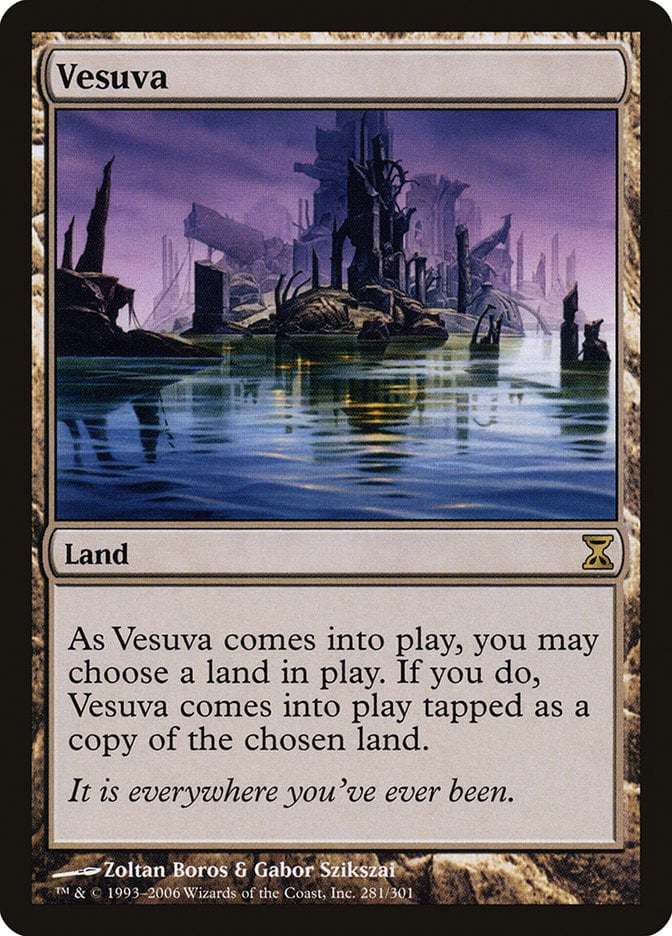
See Thespian's Stage above. Vesuva doesn’t have to be activated to copy a land. It doesn’t combo with Dark Depths, though, since it would enter with the counters.
#21. Rishadan Port
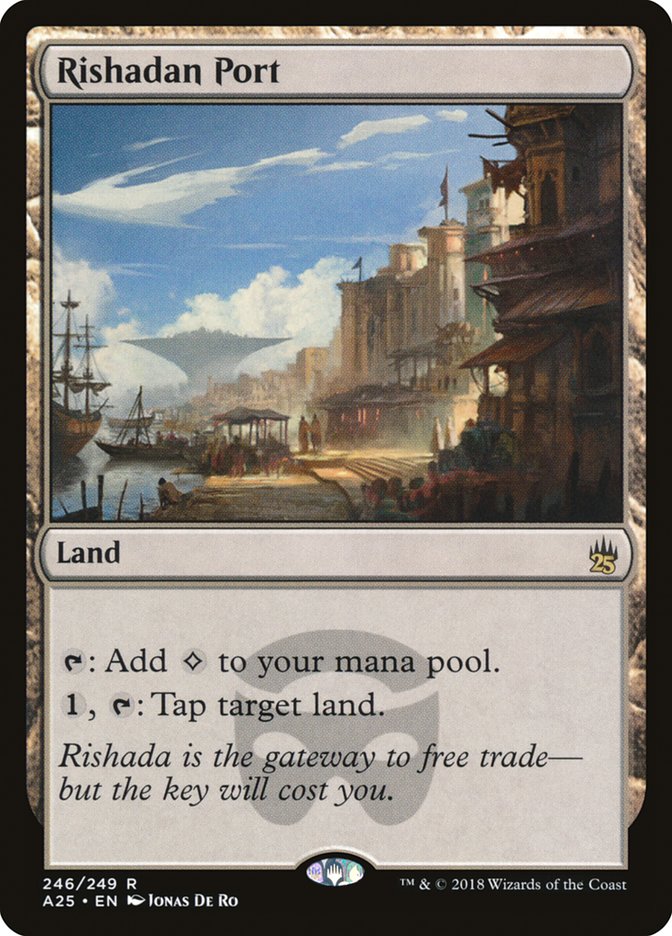
“Upkeep port your port” is a sentence that ‘90s players used to hear, alongside EOT Fact or Fiction. Jokes aside, Rishadan Port is good because tapping things is good, but it’s hard to tap lands. When you have this in a land you can delay your opponent significantly and also tap their key dual land.
#20. The Tabernacle at Pendrell Vale
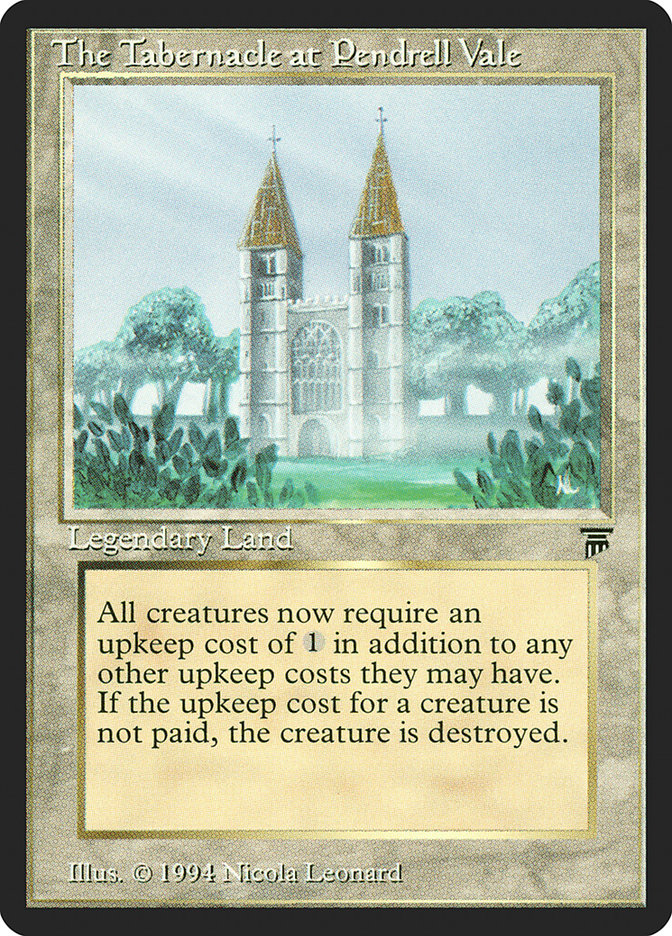
The Tabernacle at Pendrell Vale has an interesting ability. Taxing aggro players keeps their board from developing further. This effect is also present on Magus of the Tabernacle.
Note that the Tabernacle doesn’t tap for mana, as some older lands do. It’s also an extremely expensive card thanks to being on the Reserved List.
#19. Prismatic Vista

A much cheaper fetch land for formats like Modern. Prismatic Vista only fetches basic lands, but this is still great if you aren’t playing too many colors.
#18. Field of Ruin
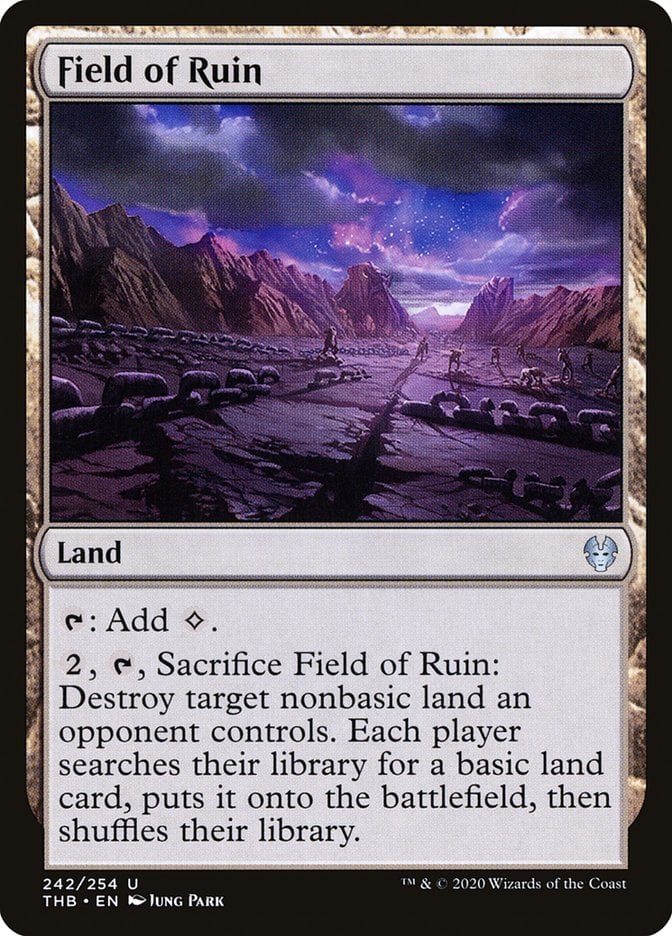
Not a format-warping card by any stretch of the imagination, but Field of Ruin is like Duress. It’s never unfair when it does its thing and it keeps formats like Standard and Pioneer less vulnerable to powerful lands and manlands.
#17. Basilisk Gate
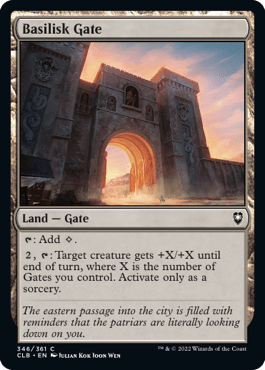
Basilisk Gate is so high on this list because it's been making waves in Pauper and adds another tool to Gates decks. If you have a flying creature and you pay two to give it, say +3/+3 or +4/+4, you’ll convert each little flying creature into a game-ending threat.
#16. Inkmoth Nexus
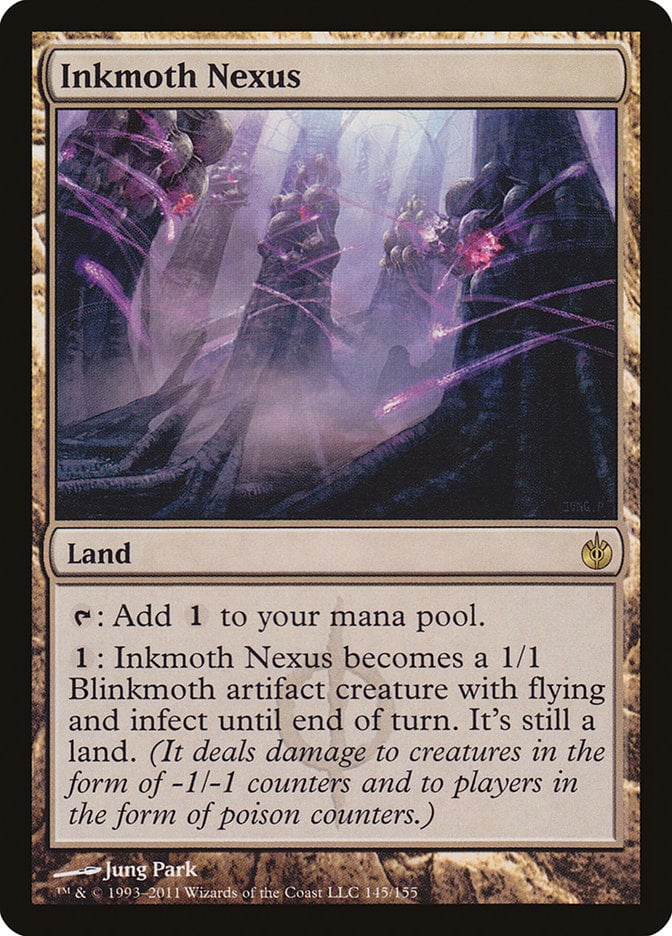
Inkmoth Nexus is a manland that can kill anyone out of nowhere thanks to the infect mechanic. And your deck doesn’t even need to be an infect, but that helps. And turning a land into a 1/1 flying infect works wonders with equipment and combat tricks.
#15. Cavern of Souls
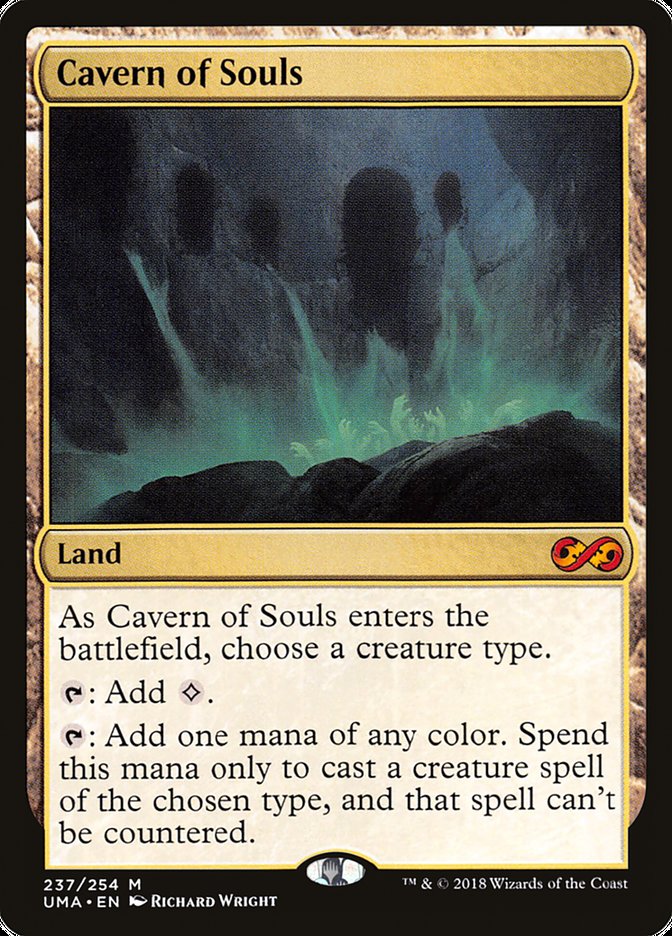
As it turns out, adding uncounterable to creatures besides fixing five colors of mana for a certain type of creature is very good. Legends has it that WotC was worried Snapcaster Mage/Delver of Secrets decks would be too powerful in the metagame so Cavern of Souls was printed to help defend against the blue menace.
Cavern is the backbone of 5-color tribal decks like humans or slivers in eternal formats, and it’s certainly playable in EDH tribal decks.
#14. Faceless Haven

Lands that become creatures are powerful, and Faceless Haven is no exception. A 4/3 hits hard enough, and WotC thought that the activation cost would be high enough or restrictive enough to keep Haven in check, but it wasn’t, causing it to be rebalanced. The fact that it has every creature type helps with tribal synergies too.
#13. Mutavault

A land that has no particular downside and can become a 2/2 for one mana is very, very good. It’s even a changeling like Faceless Haven. Mutavault goes in aggressive decks, tribal decks, control decks as an extra win condition.
#12. Field of the Dead
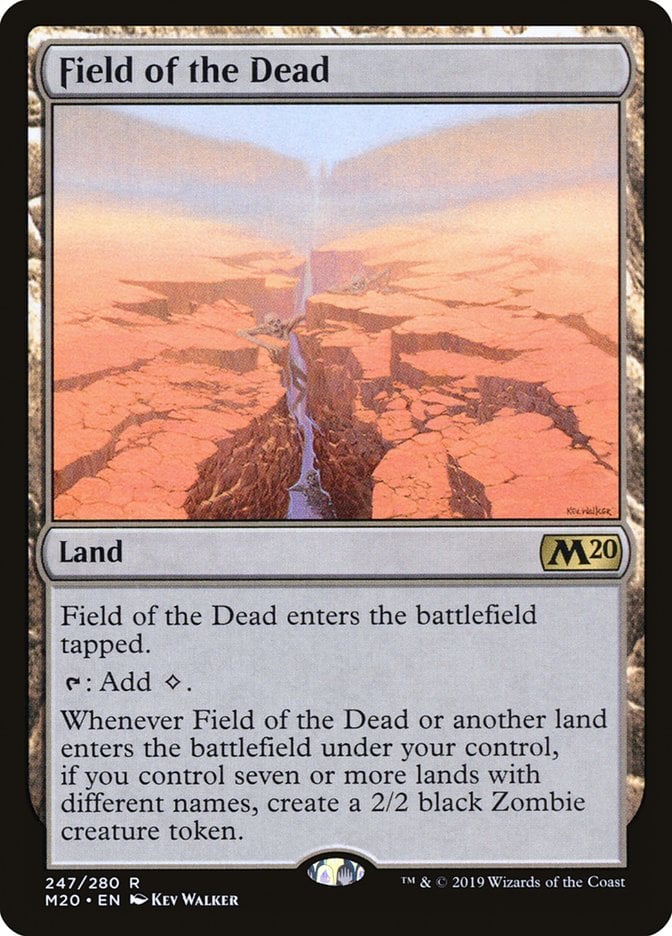
There’s almost a pattern with the lands in this tier being too powerful and ending up banned in some formats. Field of the Dead asks that you play different lands which is easy with enough non-basics across many formats, even in Standard.
Field of the Dead then produces an army of 2/2s with every subsequent land drop once you have enough lands, which is very hard to interact with and beat. That’s why having power in the lands is complicated since there aren't that many tools to interact with them.
#11. The Tron Lands
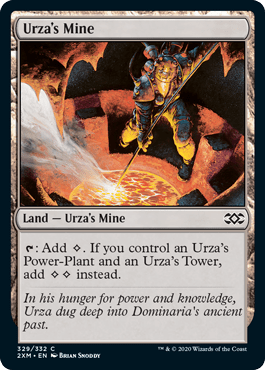
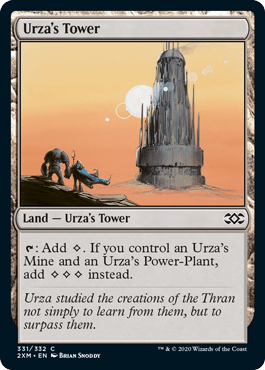

The famous Tron lands make for a combo deck played mostly in Modern and Pauper. Assembling Tron produces seven mana from only three lands, and it can be done as early as turn 3. Think of all the powerful spells to be played ahead of curve, from Ugin, the Spirit Dragon to Karn Liberated.
#10. Mishra’s Workshop
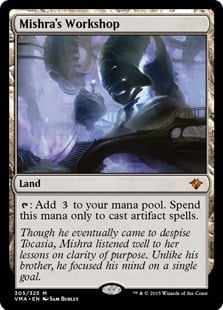
Mishra's Workshop is one of the pillars of the Vintage format, since it’s only legal there. Decks get amazing tempo from this land since generating three mana is awesome.
The key is to fill the deck with expensive artifacts (ideally ones that cost three or six). Vintage players ask themselves if it's playable in “Shops” decks anytime an expensive and powerful artifact is printed.
#9. Dark Depths

The goal of playing Dark Depths is to produce Marit Lage, a 20/20 indestructible token, and win from there. There are so many combos to take out all of the counters in one fell swoop, from Vampire Hexmage to Thespian's Stage.
This land is banned in Modern and a staple of decks with combos in Legacy and beyond. Legacy even has a deck called lands (which plays some of the cards in this list) that aims to win with this combo.
#8. Command Tower

Tapping to add one mana in your commander’s colors without any downside easily makes Command Tower one of the best lands in EDH, and one that almost all decks gladly play a copy of. Its value only grows if your commander has 4- or 5-colors.
#7. Ancient Tomb

Ancient Tomb is so high on the list because it ramps. But it’s not perfect, because you lose two life (negligible in EDH) and it’s only colorless mana, but still. Playing a key planeswalker ahead of time, acting as a prison effect like Trinisphere, or serving as copies five through eight of Eldrazi Temple are all huge.
#6. Bazaar of Baghdad

Bazaar of Baghdad is one of those weird lands. It doesn’t produce mana, which is a relic of Magic’s past. It’s card disadvantage, because you draw two and discard three. So, what’s this good for?
The answer is dredge. Dredge decks need as many key cards in the graveyard as possible. Discarding cards like Golgari Grave-Troll, Prized Amalgam, and Vengevine is actually card advantage in these decks.
#5. Nykthos, Shrine to Nyx
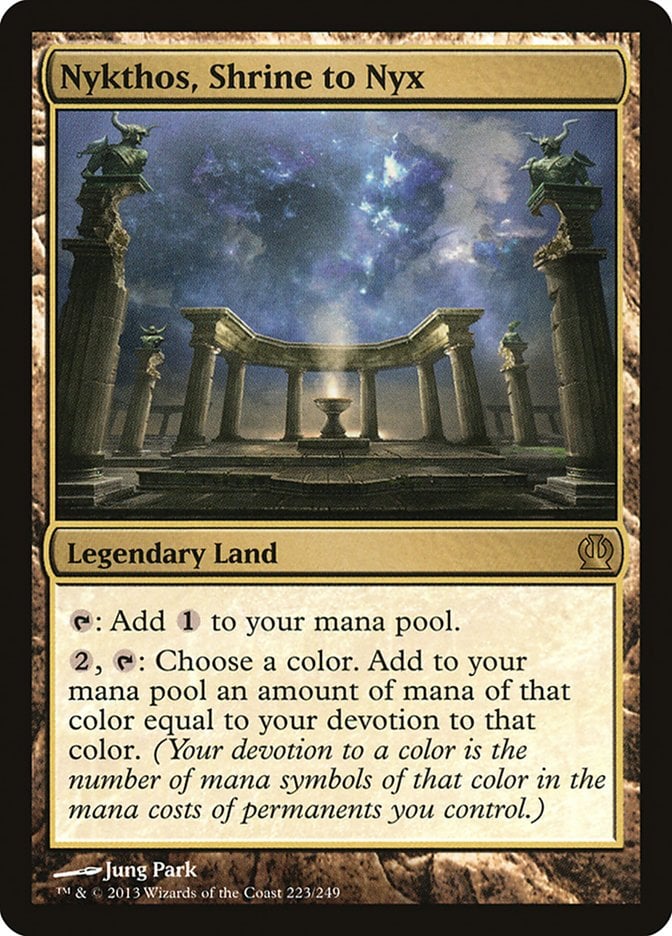
The devotion land from Theros is hardly used to do fair things. Nykthos, Shrine to Nyx can generate five or six mana in an activation in a dedicated devotion deck, which is then used to pay X spells and the like. A powerhouse in any format where a mono-colored devotion deck is legal.
Since the gods themselves require mana to active abilities and devotion, it’s a good fit too.
#4. Urza’s Saga
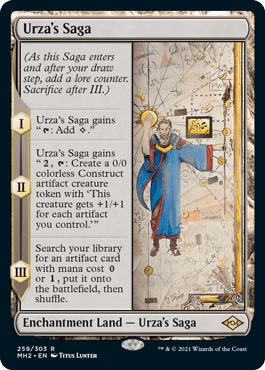
A land that took eternal formats like Modern and Legacy by storm, Urza's Saga doesn’t do anything strictly unfair. It’s a land that provides creatures, card advantage and the like. And yes, it’s the only enchantment land in the history of the game. So what’s the big deal about Urza's Saga?
First, it’s a land with no downside since it doesn’t enter tapped. The second ability can generate a big creature and be used twice, and it’s even better in artifact decks. The third ability can be used to generate card advantage with cards like Mishra's Bauble and Expedition Map. And it raises the consistency of combo decks that need certain pieces since it tutors for an artifact.
#3. Wasteland

Fixed Strip Mine and legal in Legacy, Wasteland is one of the best ways to deal with troublesome nonbasic lands. It's usually played in tempo decks that want to keep the lead like Delver decks and in decks with land recursion using planeswalkers like Wrenn and Six or artifacts like Crucible of Worlds.
#2. Strip Mine

Strip Mine is one of the best ways to destroy a land with no downside, and it's strictly better than Wasteland. Just play the Mine and tap it to destroy an opponent’s land. Although it’s usually aimed at nonbasic lands, Strip Mine is one of the few ways to destroy a basic land.
#1. Library of Alexandria
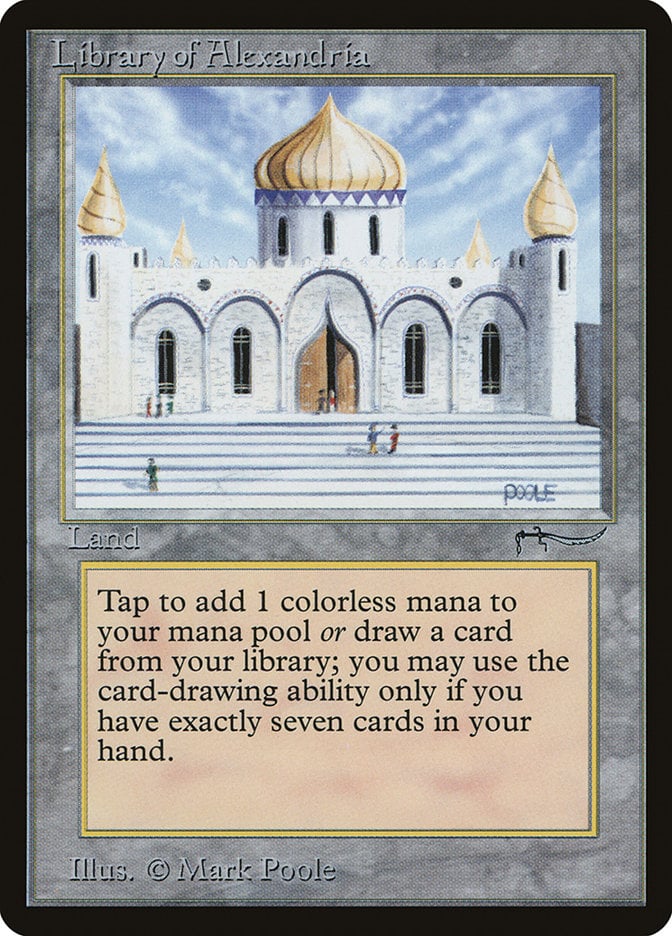
If you have seven cards in hand, just tap Library of Alexandria to draw an extra card. This is one of those cards that’s a strategy itself.
Draw-go decks in Magic have always been powerful, and Library makes controls deck broken, hence it being restricted in Vintage and banned elsewhere, even in Commander.
Wrap Up
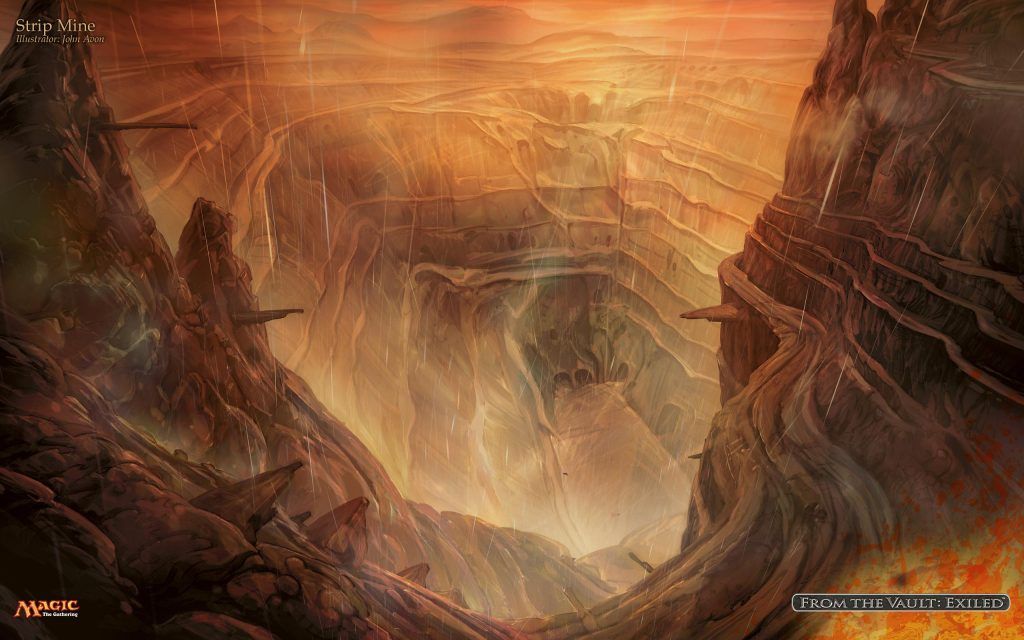
Strip Mine | Illustration by John Avon
Well, that’s all for today. There have been tons of powerful colorless lands printed over Magic’s history, and these lands didn’t even need to tap for mana in the game’s early years. They're usually the cornerstones of various decks since they either fix mana for four or five colors, interact with the opponent’s lands, and have special abilities like drawing a card.
Did I miss a key land that you play in your format of choice? Let me know in the comments below or on the official Draftsim Discord.
Thanks for reading, and I’ll see you next time!
Follow Draftsim for awesome articles and set updates: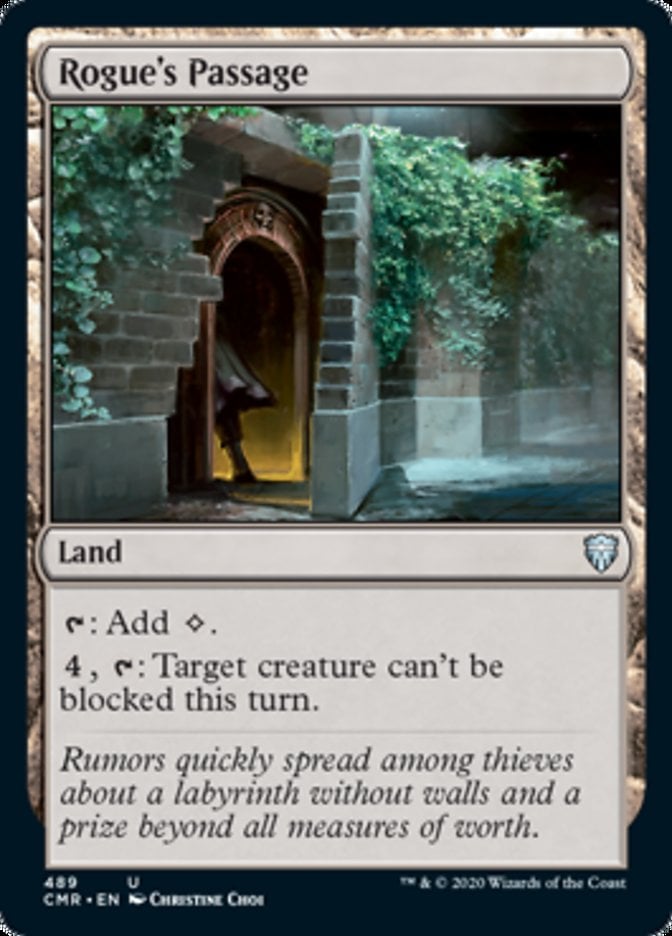
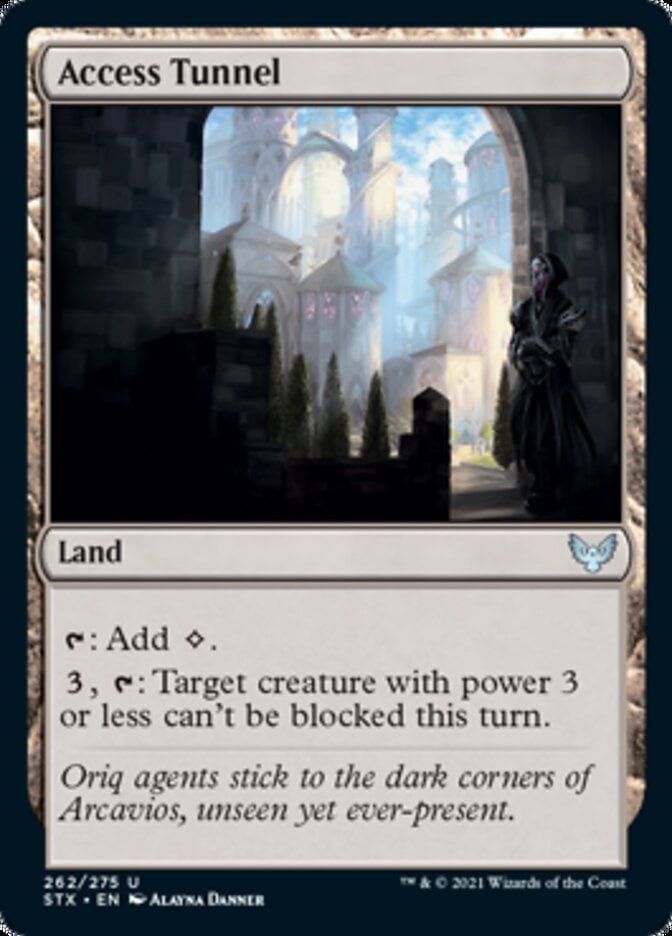
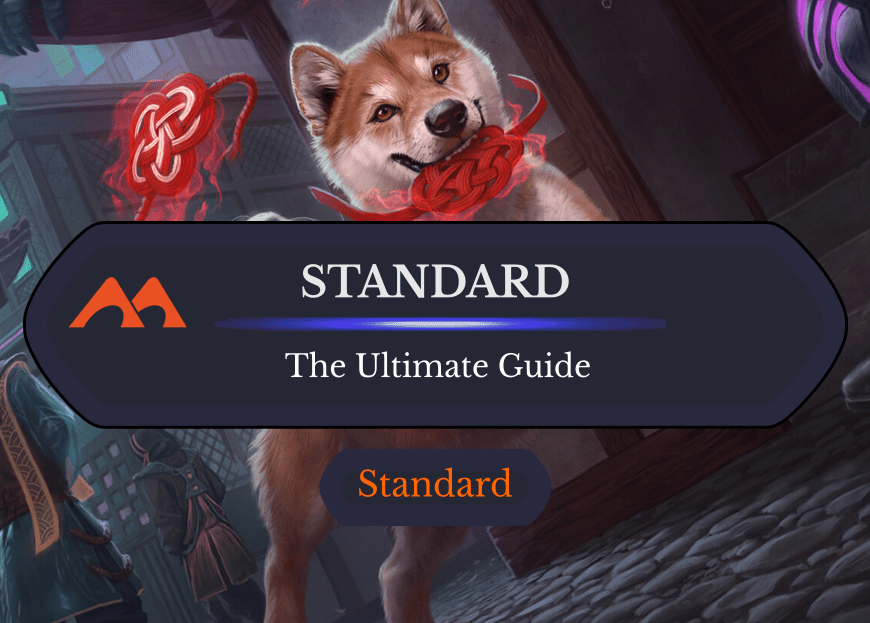

Add Comment